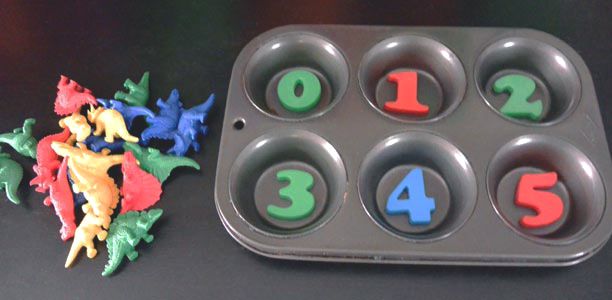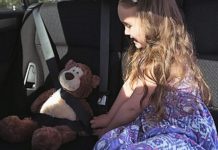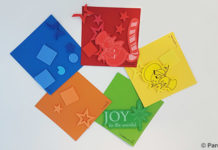Age
2-5 years
Duration of activity
You can fill in a few spare minutes doing one of the muffin tin counting activities or up to an hour, if you decide to repeat the activities for extra learning.
Materials/equipment
-

Download set of circular number cards A muffin tin or any tin or container with a number of evenly sized compartments that are large enough to hold counted objects. For example, you could use an old egg carton, but you would need to give your child very small objects to count into each space.
- A set of circular number cards (print the 0-12 set or just the numbers you are teaching) or any set of numbers which fit in the compartments (e.g. numeral fridge magnets).
- Quantity dot flashcards
-

Download set of quantity dot cards Materials for laminating the number circles (optional)
- Small objects for counting- any objects will do as long as they are small enough to fit into the compartments. For example in a muffin tray you could fit small toy dinosaurs or in an egg carton something smaller like dried beans, nuts or sultanas.
Cost
You should not need to buy any materials to do this activity, unless you choose to laminate the number circles.
Preparation
Collect small objects for counting (or ask your child to collect the small objects they want to count) and put them together with the flash cards and counting container in the area where your child will play.
What to do
Option 1: Counting objects to match the number of dots
- This activity is suitable for 2-4 year olds who are still learning to count and do not yet recognise the numerals that represent each quantity.
- The activity involves your child looking at dot quantity flashcards and counting out the same number of objects to place in each compartment of a muffin tin.
- Give your child a six compartment muffin tin (or other container). Tell them that today you will help them learn how to count, by counting a different number of objects into each compartment of the muffin tin. Ask them to count the number of compartments in the muffin tray, pointing to each compartment as they count. Give them a hand if they get stuck.
- Show your child the dot flashcards with quantities 1-6 (or if your child is just starting to count, just use quantities 1-3 and count each quantity into a compartment twice, or if you are teaching them zero, 0-5). Get them to count and point to the dots on each flashcard.
- Explain that now they will start counting the correct number of objects to match each flashcard and putting them in the compartments of the muffin tin.
- Show them the flashcard with one dot and ask, “How many dots can you see?” Get them to count out the dots if they don’t automatically see the quantity.
- Now ask them to place the same number of objects in the first compartment of the muffin tin.
- Repeat for quantities two to six for older children, filling from left to right across the top row of the muffin tin and then left to right across the bottom row.
- For children who are just learning to count, repeat for quantities two and three filling from left to right across the top row of the muffin tin and then repeat 1-3 to fill the bottom row.
Extension activity
Ask your child more or less questions about the groups of objects they have to count. For example you could say, “Which compartment has more buttons in it, the 3 compartment or the 2 compartment?”
Option 2: Counting objects to match numerals
- This activity is suitable for 3-5 year olds who can already count and are learning to recognise numerals.
- You can use a six or twelve compartment muffin tray or other container, depending on your child’s ability and the containers you have.
- Place the numeral circles in order in the compartment working across then down. For example in a twelve compartment tin you will end up with 1-4 in first row, 5-8 in second row and 9-12 in third row (or 0-3 etc., if you are teaching your child zero).
- Give your child the tin and ask them to point to each number and count aloud. Help them if they get stuck and can’t remember which number comes next, for example saying, “The last number you counted was three, what number comes after three?” If they are still stuck, count aloud with them to find the answer.
- Next point to numbers randomly and ask your child to tell you what number you are pointing too. If they are stuck, help them by showing them the corresponding numeral dot flashcard so that they can count the number of dots to identify the name of the numeral.
- Now explain to your child that their task is to place the number of objects that each numeral represents in each compartment. Ask them to begin by placing one object in the compartment with numeral one, then two objects in the compartment with numeral two and so on.
- When your child has already done this activity, you may like to ask them to count the objects into the compartments out of order. This will be a bit more challenging.
Extension activities for option 2
- For older children who already recognise some of the numerals, ask them to begin the game by placing the numeral circles in order in the muffin tin, starting from the top left then working across and down (1-4 in first row, 5-8 in second row and 9-12 in third row). More advanced children may even be able to place them correctly in backwards order.
- To make this activity more challenging, place the numbers in backward order and then random order.
Option 3: Counting objects and choosing/writing the numeral
- This activity is suitable for 3-5 year olds who can already count and are beginning to recognise numerals.
- You can do the activity using a six or twelve compartment muffin tin.
- Count a different number (0-11 or 1-12) of objects into each compartment of the muffin tin. To begin place the quantities sequentially so that the first compartment holds one object, the second contains two objects and so on. When your child is familiar with the activity you may like to make it a bit more challenging and place the quantities in backward order or random order.
- Explain to your child that their task is to find the number of objects in each compartment and place the corresponding numeral in the compartment with the objects.
- Show them the numeral circle cards and explain that each one has a different numeral written on it and each numeral represents a quantity. Hold up one finger and ask them to find the matching numeral circle. Then hold up three fingers and then six fingers.
- Now ask you child to count the number of objects in the first compartment of the muffin tin. When they have identified the correct number of objects, ask them to find the matching numeral and place it in the compartment.
- Repeat for each compartment.
- Have a set of numeral and dot flashcards handy so you can help your child if they get stuck. Get them to count the dots on the flashcards until they find the one with the same number of dots. Then they can find the same number on the numeral circles.
Extension activity for option 3
For older children who are learning to write numerals, give them a pen and small circles of paper instead of the numeral circles, so that they can write the numbers themselves.
Safety
Supervise your child and be sure they do not put small objects which they might swallow in their mouths.
Tips
When your child starts to learn the numbers that represent the presence of quantities (i.e. one and above) start to use zero, the symbol which represents the absence of a quantity. Although children understand the concept of nothing, they tend to find it more difficult to understand numeral 0 represents nothing, and to place zero in its correct place in the counting sequence, compared to all the other numerals which represent quantities.
Educational outcomes
Mathematical skills
Counting and learning to recognise numerals and quantities are amongst the most important mathematical skills for children to develop in early childhood. This activity is a fantastic way to help your child develop these important maths skills.
As they learn to count and associate the numbers they say with the quantities they have counted, children will be developing fundamental mathematical skills which they’ll use throughout their life when they count and perform mathematical equations.
Understanding that the numeral 0 equates to nothing is a difficult but fundamental concept for young children, which will allow them, for example to answer questions like, ‘Mary had five sweets and she ate five sweets. How many sweets are left?’ As zero is not a quantity that can be seen or counted, on the contrary it is the absence of a quantity, understanding zero is a bit more challenging for kids than understanding other numbers. This game, which exposes children to the numeric symbol/number 0 and allows them to associate it with a muffin tin compartment that contains nothing, is a great way to help your children understand this important mathematical concept. At this age your child will also be learning to recognise shapes like circles, so discussing the shape of the symbol for nothing, 0, will also help them learn to recognise circles.
Other maths concepts which your child will develop an understanding of while doing this activity are:
- An understanding of one to one correspondence which means you child understands that each number that is counted represents a quantity of one, even if they are counting a higher number.
- An understanding of more and less allowing your child to identify which group/s have more objects and which have less objects in them.
- Place value or the order of numbers in counting, meaning that you child knows for example that seven is placed after six and before eight. An understanding of place value is a vital foundation for solving mathematical equations later in life.
- Cardinality, which means that your child understands that when they are counting a group of objects, the last number counted represents the number of objects in the group.
- Subsitising or the ability to recognise the quantity in a small group of objects (e.g. two) without counting it. Subsitising is what we do for example when we see five dots on a dice and know there are five dots without counting them.
What your child is already able to do and what they learn will depend upon their age and ability. As they grow up children develop their understanding of relationships between numbers and quantities. Doing activities like this one which require them to count and take one object at a time helps them develop their awareness of number relationships and the ability to represent quantities in numerous ways (e.g. with a numeral or a quantity of dots).
By age two most children can recognise small groups of objects, for example they might point at a pair of shoes and say, “two”. They may imitate counting but will probably only know a few number words (and make a lot of others up). Three years olds can generally count a bit but they do it by rote, meaning that when they count they rely on their memory to say the words they remember in the order they remember them. They do not understand that each word they are saying is a number that refers to a specific quantity. So don’t be surprised if your three year old counts 1, 2, 4 objects in a group. Rest assured that by about age four they’ll develop the ability to count objects in the correct sequence using one to one correspondence, with an understanding that each thing they count represents one and the last number they count is the quantity.
Fine motor skills
Picking up small objects and placing them in the muffin tin is a wonderful way for children to exercise, and develop strength and control of the muscles that control their finger movements. And it’s these same muscles that your child will use throughout their life to do things like write, turn the pages of books, fasten zippers and buttons and of course, pick up small objects.
Babies develop the ability to use their fingers very quickly and by the time they are toddlers, most kids have already developed enough control over their finger movements to pick up small things using just the thumb and forefinger in the grasp know as pincer grasp. At this age they enjoy placing objects in containers, and often also pouring them out again (so don’t be shocked if your toddler stops counting and overturns the muffin container from time to time). Preschoolers will have developed more precise and controlled movements which allow them to pick up and manipulate smaller objects. For example by about four years of age most children can easily handle small beads. Using their fingers to pick up and put down the small objects in this activity is great finger exercise which will further develop and strengthen your child’s fingers.
Communication and social skills
Activities like this one are also a great opportunity to socialise and communicate with your child and as you do that, you’re helping them understand the conventions of conversation and learn to socialise effectively. As kids learn from doing, spending social time communicating with them is also a lesson in social etiquette and effective communication.
Toddlers will still be learning about conversation rules, for example they may not yet realise that people have to take turns at speaking (and like all other people they have to wait for their turn). They’ll be able to express themselves, but will still be developing the vocabulary to express their thoughts and feelings in words and the skills to effectively use body language and facial expressions to add meaning to what they say. As they enter and go through preschool, you’ll notice their vocabulary broadens, allowing them to better express themselves (e.g. instead of only comparing size in terms of big and small they’ll also use words like short and long, thin and thick). They also start to use new forms of grammar, facial expressions and body language.
References
- Virginia Early Childhood Development Alignment Program. Milestones of child development- A guide to young children’s learning and development from birth to kindergarten. 2009. (cited 17 November 2014). Available from: (URL Link)
- Jung M, Hartmen P, Smith T. The Effectiveness of Teaching Number Relationships in Preschool. Int J Instruction. 2013; 6(1). Available from: (URL Link)
- Merritt DJ. Nothing to it: Precursors to a zero concept in pre-schoolers. Behav Processes. 2013; 93: 91-7. Available from: (URL Link)



 (8 votes, average: 4.50 out of 5)
(8 votes, average: 4.50 out of 5) 






